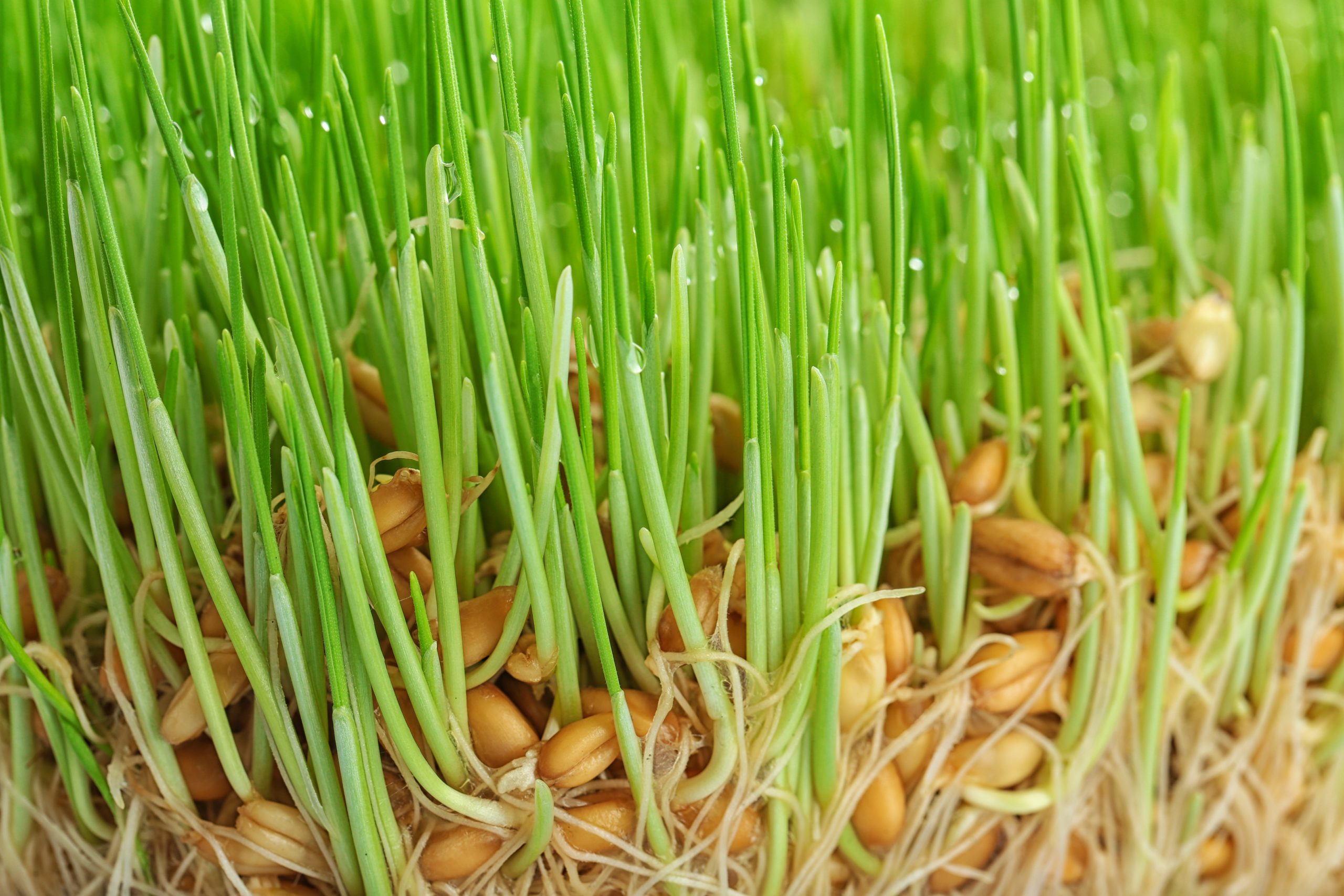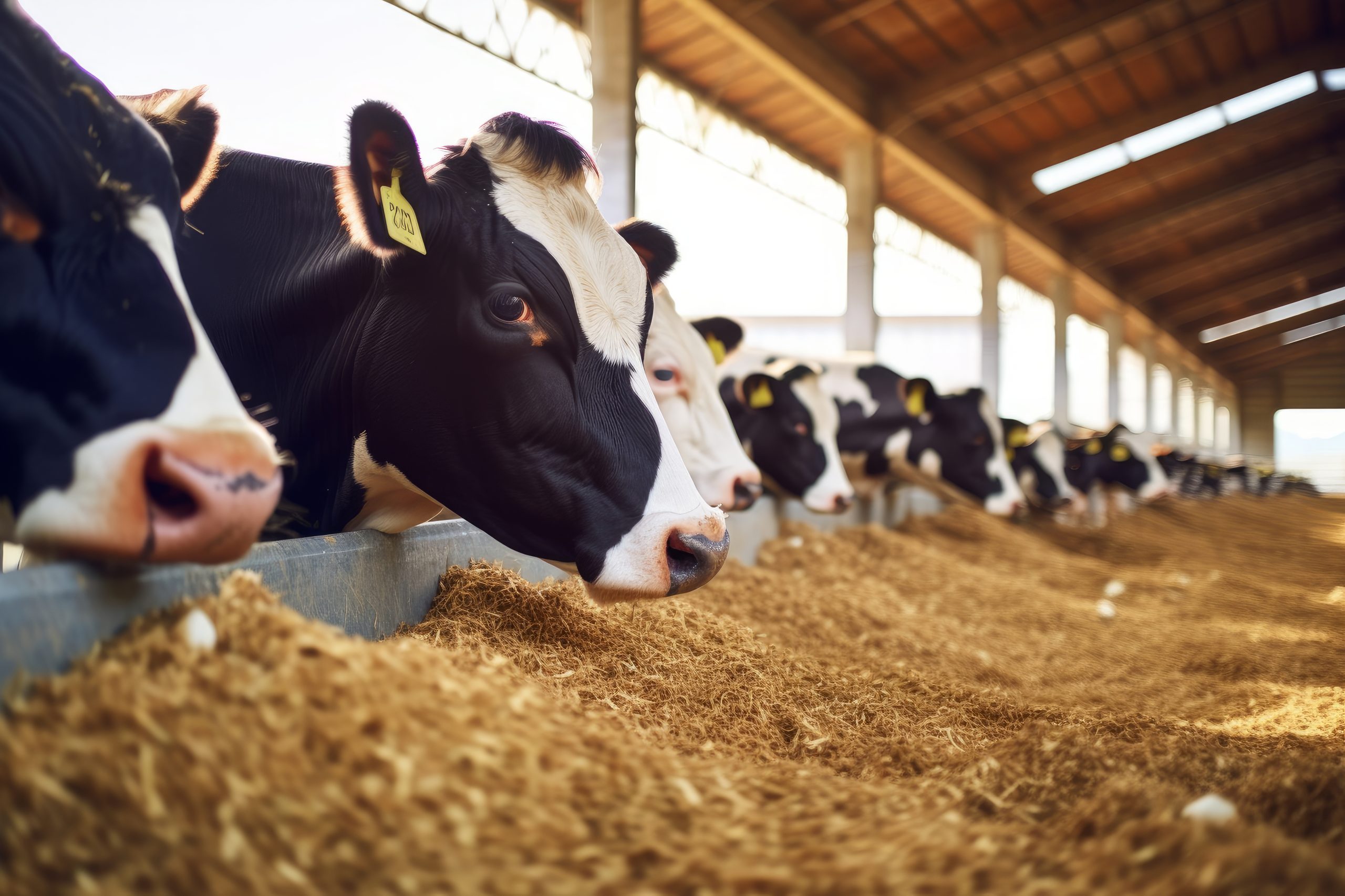Abstract:
Asian countries have been facing significant challenges in securing a stable supply of feed ingredients, such as alfalfa and grain, for their agriculture and livestock industries. This white paper examines the intricate web of supply chain issues that have impacted these nations, including droughts, political unrest, and pandemics. It also highlights the growing importance of sustainability and self-reliance as vital strategies for Asian nations to ensure food security and resilience in the face of ongoing disruptions.
Introduction
The agricultural sector is the backbone of many Asian economies, providing food, livelihoods, and economic stability. However, the reliable supply of essential feed ingredients, such as alfalfa and grain, is increasingly under threat due to a complex interplay of factors. This white paper explores the challenges Asian countries face in securing these vital feed supplies and underscores the urgency of adopting sustainable and self-reliant strategies.
Supply Chain Challenges
1. Drought and Water Scarcity
**Drought** is a recurring challenge that disrupts feed production in many Asian nations. Prolonged periods of water scarcity and changing precipitation patterns threaten crop yields, making it difficult to grow the feed crops needed for livestock. As climate change intensifies, the frequency and severity of droughts are expected to increase, amplifying this supply chain risk.
2. Political Unrest and Trade Barriers
**Political unrest** and **trade barriers** create uncertainties in feed sourcing for Asian countries. Geopolitical tensions, trade disputes, and export restrictions imposed by supplier nations can disrupt the flow of feed ingredients. These disruptions can lead to sudden price hikes and shortages, impacting the stability of the agricultural sector.
3. Pandemics and Labor Shortages
The outbreak of **pandemics**, such as the COVID-19 pandemic, has highlighted the vulnerability of the agricultural supply chain. Quarantine measures and labor shortages have disrupted the production, transportation, and distribution of feed ingredients. This has created bottlenecks that ripple through the supply chain, affecting the availability and affordability of feed.
The Importance of Sustainability
1. Resource Efficiency
Sustainability in agriculture is crucial for addressing supply chain challenges. Sustainable farming practices, such as precision agriculture and reduced water usage, can mitigate the impact of droughts and water scarcity. These practices optimize resource efficiency, ensuring more stable feed production.
2. Localized Production
A key aspect of sustainability is **localized production**. Asian countries must prioritize developing domestic feed production capacity. By reducing reliance on imports, nations can insulate themselves from global supply disruptions caused by political unrest or pandemics.
3. Crop Diversification
**Crop diversification** is another sustainability strategy. Expanding the variety of feed crops grown domestically can mitigate risks associated with crop-specific disruptions. For instance, cultivating alternative crops like sorghum or millet alongside traditional grains can provide feed alternatives during shortages.
4. Circular Agriculture
Embracing **circular agriculture** practices can further enhance sustainability. This approach includes recycling agricultural byproducts and waste into animal feed, reducing the demand for external feed sources. Additionally, integrated farming systems that combine crop and livestock production can maximize resource utilization.
The Path to Self-Reliance
1. Investment in Research and Technology
Asian nations must invest in **research and technology** to enhance agricultural productivity and reduce dependence on external feed sources. This includes developing drought-resistant crop varieties, improving irrigation systems, and adopting modern farming practices.
2. Strategic Stockpiling
**Strategic stockpiling** of feed ingredients during periods of abundance can buffer against supply chain disruptions. Governments and private sector stakeholders should collaborate to establish reserves that can be tapped into during emergencies.
3. Trade Diversification
Asian countries should explore **trade diversification** strategies by establishing alternative trade partnerships and reducing dependence on a single supplier. Diversifying sourcing countries can provide a safety net during times of geopolitical uncertainty.
4. Policy Support
Government policies play a pivotal role in promoting self-reliance. **Incentives** for sustainable farming practices, subsidies for modernization, and policies that encourage domestic feed production are essential in building a resilient agricultural sector.
Case Studies
1. China’s Quest for Self-Reliance
China has recognized the importance of self-reliance in feed sourcing. The government has implemented policies to boost domestic feed production, including support for sustainable practices and crop diversification. This strategy aims to reduce reliance on soybean imports, a key feed ingredient.
2. India’s Focus on Circular Agriculture
India has been promoting circular agriculture by utilizing agricultural residues and byproducts as livestock feed. This not only reduces waste but also decreases the demand for external feed sources. Such initiatives contribute to self-reliance in feed production.
3. Thailand’s Investment in Technology
Thailand has invested in agricultural technology, including precision farming and advanced irrigation systems. These investments enhance agricultural productivity, reduce water usage, and strengthen the nation’s self-reliance in feed production.
Conclusion
Asian countries are facing a complex web of supply chain challenges in sourcing feed ingredients critical to their agricultural and livestock industries. Droughts, political unrest, and pandemics have exposed vulnerabilities in the traditional feed supply chain.
The adoption of sustainable practices, localized production, and circular agriculture is essential to building resilience in the face of these challenges. Additionally, a strategic shift toward self-reliance through investment in research, technology, and policy support can help Asian nations ensure food security and agricultural stability in an increasingly uncertain world.
As the global climate continues to change, and geopolitical tensions persist, the importance of these strategies cannot be overstated. By embracing sustainability and self-reliance, Asian countries can fortify their agricultural sectors, ensuring a stable and prosperous future for their nations.
백서: 아시아 농업 사료 소싱의 공급망 과제: 가뭄, 정치적 불안 및 전염병 대처
추상적인
아시아 국가들은 농업 및 축산업에 사용되는 알팔파, 곡물 등 사료원료의 안정적인 공급을 확보하는 데 큰 어려움을 겪고 있습니다. 이 백서는 가뭄, 정치적 불안, 전염병을 포함하여 이들 국가에 영향을 미친 복잡한 공급망 문제를 조사합니다. 또한 이는 지속적인 혼란에 직면하여 아시아 국가들이 식량 안보와 회복력을 보장하기 위한 필수 전략으로서 지속 가능성과 자립의 중요성이 커지고 있음을 강조합니다.
소개
농업 부문은 식량, 생계, 경제 안정을 제공하는 많은 아시아 경제의 중추입니다. 그러나 알팔파, 곡물 등 필수 사료 성분의 안정적인 공급은 요인들의 복잡한 상호작용으로 인해 점점 더 위협받고 있습니다. 본 백서는 아시아 국가들이 이러한 중요한 사료 공급을 확보하는 데 직면한 과제를 살펴보고 지속 가능하고 자립적인 전략 채택의 시급성을 강조합니다.
공급망 과제
1. 가뭄과 물 부족
**가뭄**은 많은 아시아 국가에서 사료 생산을 방해하는 반복되는 문제입니다. 장기간의 물 부족과 강수량 패턴의 변화는 작물 수확량을 위협하여 가축에 필요한 사료 작물 재배를 어렵게 만듭니다. 기후 변화가 심화됨에 따라 가뭄의 빈도와 심각도가 증가하여 이러한 공급망 위험이 증폭될 것으로 예상됩니다.
2. 정치적 불안과 무역장벽
**정치적 불안**과 **무역 장벽**은 아시아 국가의 사료 공급에 불확실성을 야기합니다. 공급국이 부과하는 지정학적 긴장, 무역 분쟁, 수출 제한으로 인해 사료 성분의 흐름이 중단될 수 있습니다. 이러한 혼란은 급격한 가격 인상 및 부족으로 이어질 수 있으며, 이는 농업 부문의 안정성에 영향을 미칠 수 있습니다.
3. 전염병과 노동력 부족
코로나19 팬데믹과 같은 **팬데믹**의 발생은 농업 공급망의 취약성을 부각시켰습니다. 검역 조치와 노동력 부족으로 인해 사료 원료의 생산, 운송, 유통이 중단되었습니다. 이로 인해 공급망 전체에 파급을 일으키는 병목 현상이 발생하여 사료의 가용성과 경제성에 영향을 미치게 되었습니다.
지속 가능성의 중요성
1. 자원 효율성
농업의 지속가능성은 공급망 문제를 해결하는 데 매우 중요합니다. 정밀 농업 및 물 사용량 감소와 같은 지속 가능한 농업 관행은 가뭄과 물 부족의 영향을 완화할 수 있습니다. 이러한 관행은 자원 효율성을 최적화하여 보다 안정적인 사료 생산을 보장합니다.
2. 국산화 생산
지속가능성의 핵심 측면은 **현지화된 생산**입니다. 아시아 국가들은 국내 사료 생산 능력 개발을 우선시해야 합니다. 수입에 대한 의존도를 줄임으로써 국가는 정치적 불안이나 전염병으로 인한 글로벌 공급 중단으로부터 스스로를 보호할 수 있습니다.
3. 작물 다양화
**작물 다양화**는 또 다른 지속 가능성 전략입니다. 국내에서 재배되는 사료 작물의 다양성을 확대하면 작물별 혼란과 관련된 위험을 완화할 수 있습니다. 예를 들어, 전통적인 곡물과 함께 수수나 기장과 같은 대체 작물을 재배하면 식량이 부족할 때 사료 대안을 제공할 수 있습니다.
4. 순환 농업
**순환 농업** 관행을 수용하면 지속 가능성이 더욱 향상될 수 있습니다. 이 접근 방식에는 농업 부산물과 폐기물을 동물 사료로 재활용하여 외부 사료 공급원에 대한 수요를 줄이는 것이 포함됩니다. 또한, 작물생산과 가축생산을 결합한 통합 농업 시스템은 자원 활용을 극대화할 수 있습니다.
자립의 길
1. 연구 및 기술에 대한 투자
아시아 국가들은 농업 생산성을 높이고 외부 사료 공급원에 대한 의존도를 줄이기 위해 **연구 및 기술**에 투자해야 합니다. 여기에는 가뭄에 강한 작물 품종 개발, 관개 시스템 개선, 현대 농업 관행 채택이 포함됩니다.
2. 전략적 비축
풍부한 기간 동안 사료 성분을 **전략적으로 비축**하면 공급망 중단을 완화할 수 있습니다. 정부와 민간 부문 이해관계자는 비상사태 시 활용할 수 있는 예비비를 마련하기 위해 협력해야 합니다.
3. 무역다각화
아시아 국가들은 대체 무역 파트너십을 구축하고 단일 공급업체에 대한 의존도를 줄여 **무역 다각화** 전략을 모색해야 합니다. 공급 국가를 다양화하면 지정학적 불확실성이 시기에 안전망을 제공할 수 있습니다.
4. 정책지원
정부정책은 자립을 촉진하는 데 중추적인 역할을 한다. 지속 가능한 농업 관행을 위한 **인센티브**, 현대화를 위한 보조금, 국내 사료 생산을 장려하는 정책은 회복력 있는 농업 부문을 구축하는 데 필수적입니다.
사례 연구
1. 중국의 자립 추구
중국은 사료 조달에 있어서 자립의 중요성을 인식하고 있습니다. 정부는 지속 가능한 관행과 작물 다양화에 대한 지원을 포함하여 국내 사료 생산을 늘리기 위한 정책을 시행해 왔습니다. 이 전략은 주요 사료원료인 대두 수입 의존도를 줄이는 것을 목표로 한다.
2. 인도의 순환 농업에 대한 초점
인도는 농업 잔재물과 부산물을 가축 사료로 활용하는 순환 농업을 장려해 왔습니다. 이는 폐기물을 줄일 뿐만 아니라 외부 공급원에 대한 수요도 감소시킵니다. 이러한 활동은 사료생산의 자립에 기여합니다.
3. 태국의 기술 투자
태국은 정밀 농업과 첨단 관개 시스템을 포함한 농업 기술에 투자했습니다. 이러한 투자는 농업 생산성을 향상시키고, 물 사용량을 줄이며, 사료 생산에 대한 국가의 자립을 강화합니다.
결론
아시아 국가들은 농업 및 축산 산업에 중요한 사료 성분을 조달하는 데 있어 복잡한 공급망 문제에 직면해 있습니다. 가뭄, 정치적 불안, 전염병으로 인해 전통적인 사료 공급망의 취약성이 드러났습니다.
지속 가능한 관행, 지역화된 생산, 순환 농업의 채택은 이러한 과제에 직면하여 회복력을 구축하는 데 필수적입니다. 또한, 연구, 기술 및 정책 지원에 대한 투자를 통해 자립을 향한 전략적 전환은 아시아 국가들이 점점 더 불확실해지는 세계에서 식량 안보와 농업 안정성을 확보하는 데 도움이 될 수 있습니다.
지구 기후가 계속 변화하고 지정학적 긴장이 지속됨에 따라 이러한 전략의 중요성은 아무리 강조해도 지나치지 않습니다. 지속가능성과 자립을 포용함으로써 아시아 국가들은 농업 부문을 강화하고 국가의 안정적이고 번영하는 미래를 보장할 수 있습니다.

